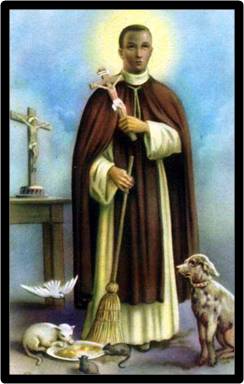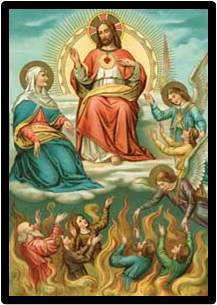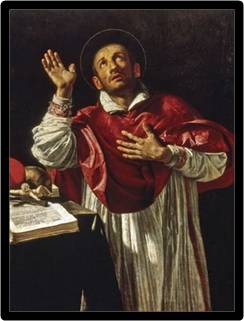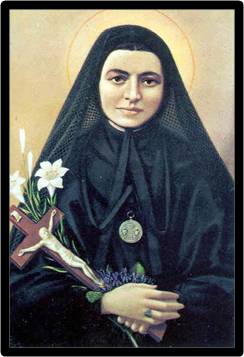
Martin was born at Lima in Peru. His father was a Spanish knight and his mother was earlier an Indian slave from Panama who had been set free.
Because of his dark complexion, his father soon became ashamed of Martin and his mother. When Martin was very young, his father went away, leaving the family to look out for themselves.
As they were very poor, his mother could not support Martin or his sister and they were sent to live at a primary school for two years.
When he was just ten years old, Martin was placed with a surgeon to learn about the medical field and earn his living. He felt great joy while helping the sick. He also learned how to cure many diseases according to the practices of those days. Even as a young boy, he spent some time every night in prayer.
Martin grew up good and holy. Martin’s father finally decided to take care of his son’s education. But Martin wanted to give himself to God and asked for admission to a Dominican Convent.
Brother Martin soon proved to be a wonderful religious. No one was kinder or more obedient or holy. Before long, he began to work miracles, too. He was known to go through locked doors to help the sick. He was even seen in other countries helping the sick although he never left Lima all his life.
He cured so many sick people that everyone in the city of Lima would ask for Brother Martin when there was sickness. He would go to them all, whether they were blacks or whites. He loved all people as his brothers and sisters in Christ.
When he took in an old beggar who was covered with ulcers and laid him on his own bed, one of the other brothers scolded him. Martin told him that it was better to be kind that to be clean because you only needed soap to wash off dirt.
Large amounts of money were given to this good, lovable Brother for his charities. People knew how well he could organize works of charity. His sister offered her house as a hospital for the sick when there was a plague in Lima.
This kind-hearted saint was also very good to animals. He excused the comings and goings of rats and mice by saying, “The poor little things don’t have enough to eat.” In his sister’s house, he kept a home for stray cats and dogs too.
Although he was so famous in Lima, St. Martin always had a very humble opinion of himself. His name for himself was, in fact, “Brother Broom.”
When Martin died on November 3, 1639, this beloved saint was carried to his tomb by bishops and noblemen who wanted to honor the humble and holy brother.




